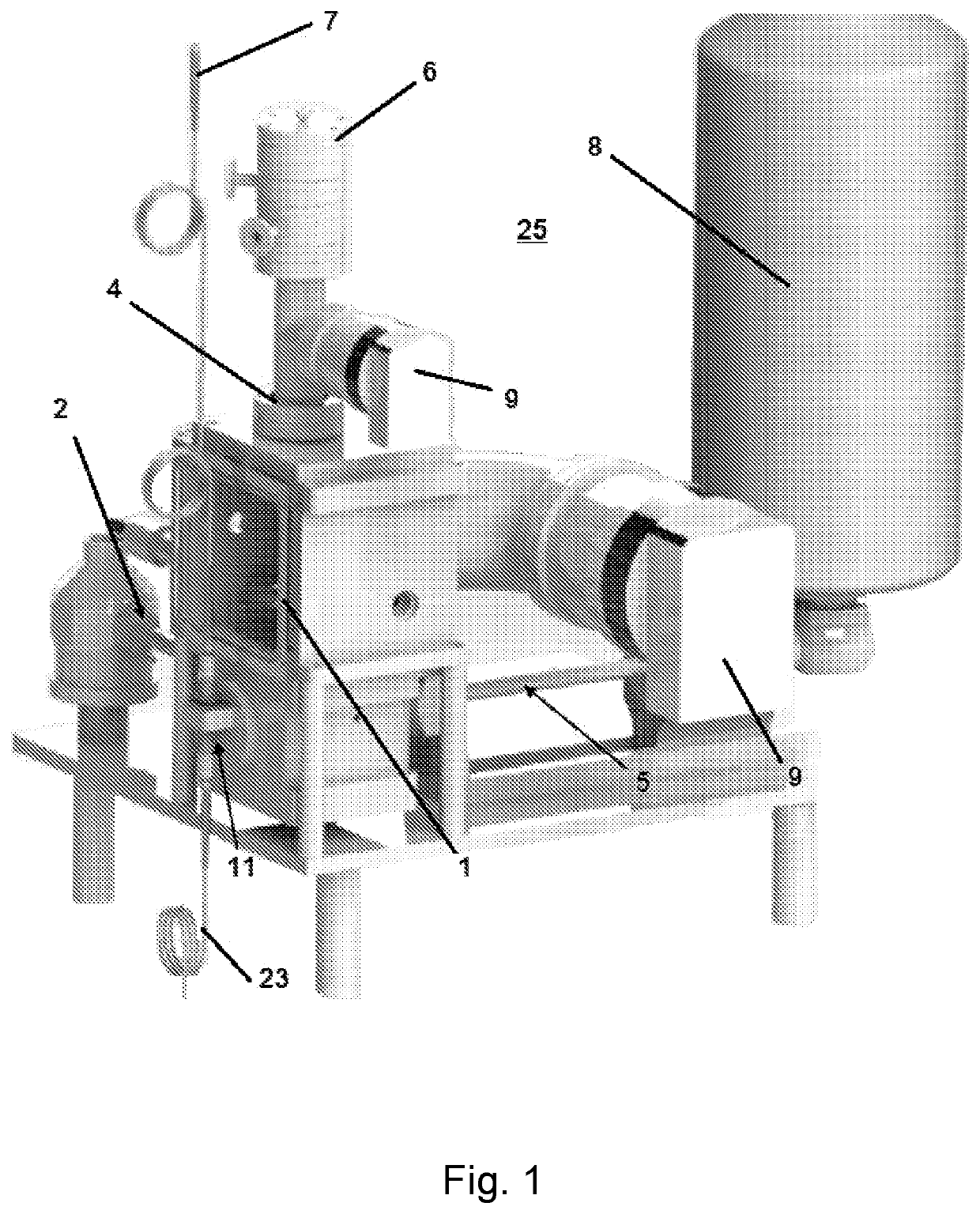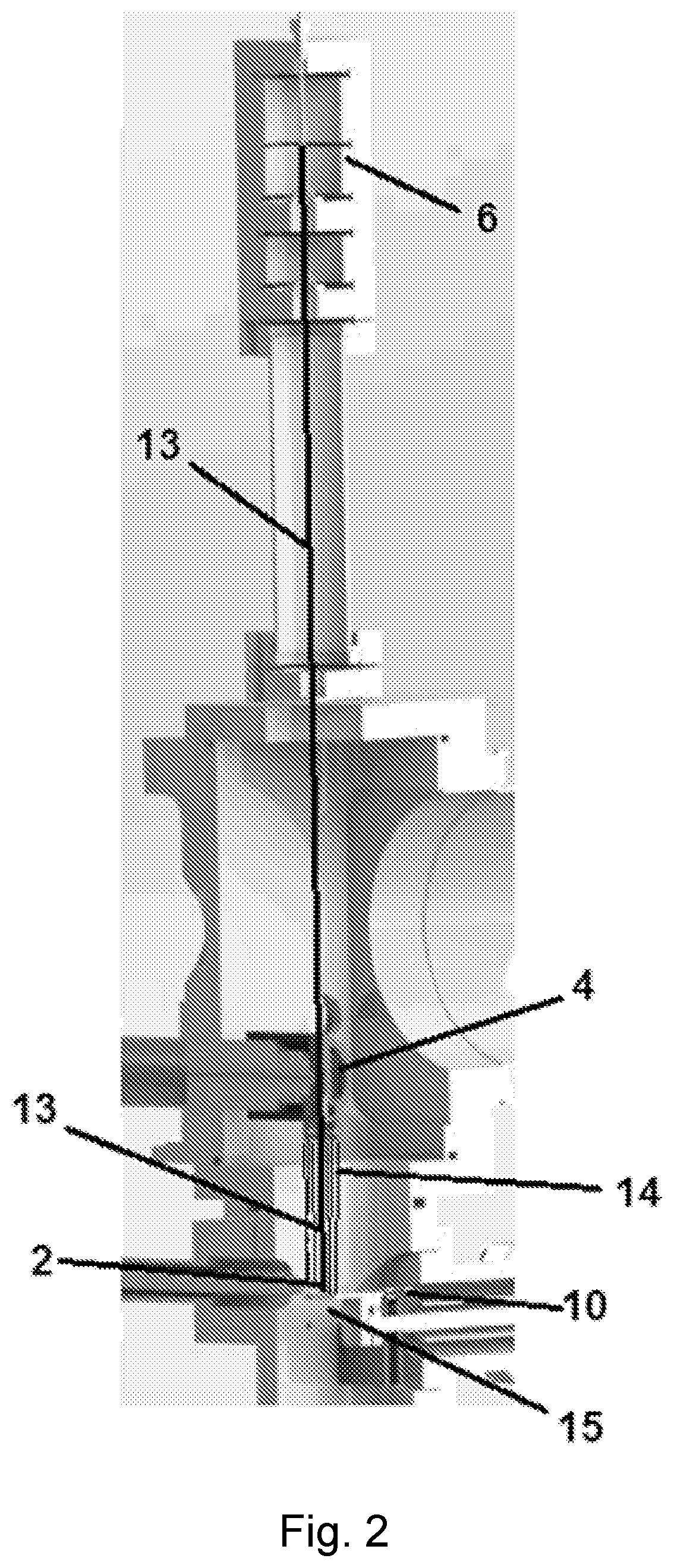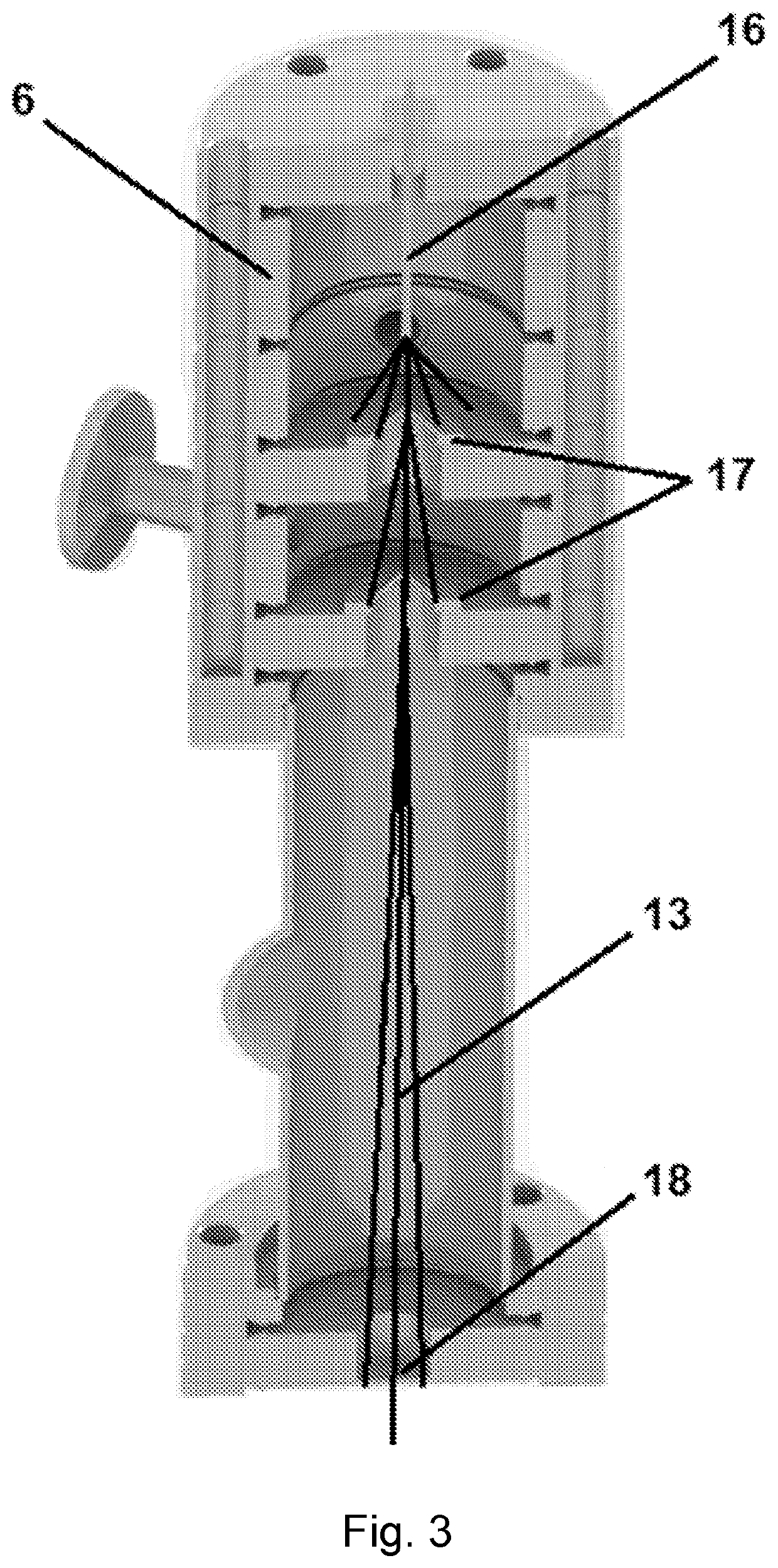Gas phase sample preparation for cryo-electron microscopy
a cryo-electron microscopy and gas phase technology, applied in the field of cryo-electron microscopy gas phase sample preparation, can solve the problems of large amount of sample required for x-ray crystallography, large amount of target molecules, and impracticality of x-ray crystallography, so as to reduce image acquisition time, increase sensitivity, and improve image resolution
- Summary
- Abstract
- Description
- Claims
- Application Information
AI Technical Summary
Benefits of technology
Problems solved by technology
Method used
Image
Examples
example 1
ample Preparation Instruments
[0044]FIGS. 1-5 and 14-16 show exemplary cryo-electron microscopy (cryo-EM) sample preparation systems 25 according to certain embodiments of the present invention. A cryo-EM probe 2 able to hold or contain a sample is inserted into vacuum chamber 1. The temperature of the system is maintained using a coolant, such as liquid nitrogen, which is stored in tank 8 and transferred through cold finger 5, while one or more turbo pumps 9 are used to maintain the vacuum.
[0045]Analyte particles are collected in an analyte source 6 where they are focused into an analyte beam 13 (such as through electrospray ion deposition) and directed to contact the sample plate being held by cryo-EM probe 2 (see FIG. 2). FIG. 3 shows one type of an analyte source 6 where analyte ions or molecules are drawn into the analyte source 6 through capillary 16. One or more ion optic devices, such as skimmers 17, are used to focus the analyte ions into a beam 13 and to control the release...
example 2
Analyte Purification
[0049]Protein ions can be purified in the gas-phase, collected in vacuo, and, once removed from the vacuum, retain their enzymatic function (Blake et al., Analytical Chemistry, 2004, 76(21):6293-6305). Following these experiments, a mass spectrometer was modified so that analyte protein ions could be purified and deposited directly onto a sample probe. The probe surface originally comprised glycerol on stainless steel; however, with the requested cryo-transfer probe, the purified protein ions are deposited directly onto a cryogenic EM grid that has previously been covered in vitreous ice. Formation of the ice layer independent of the sample allows for the generation uniformly thick ice. Any imperfection in the ice may be corrected using ion milling or related techniques. Independently forming the ice also allows for appropriate quality control measures prior to committing the sample.
[0050]Vitreous ice undergoes a phase transition from high density amorphous (HDA)...
example 3
of Amorphous Ice
[0051]The present invention provides methods and instruments for preparing samples of an analyte with amorphous solids for use in cryo-electron microscopy (cryo-EM). The amorphous solids, which protect the analyte from radiation damage and dehydration during imaging, must remain transparent to the electron beam during EM. This requires the amorphous solid layer (e.g., the ice layer) be thin, on the order of the same thickness of the molecules to be analyzed, and the solid must be amorphous. If the amorphous solid becomes too thick, the electrons may be scattered causing defocusing and reduction in image contrast. If ordered crystals, such as crystalline ice, begin to form, the electrons will be diffracted and the resulting diffraction pattern will obscure the image (Cheng et al., Cell, 2015, 161(3): 438-449). The difficulties associated with forming vitrified sample as described above are well known in the art.
[0052]Probably less well known is the importance that vit...
PUM
| Property | Measurement | Unit |
|---|---|---|
| thickness | aaaaa | aaaaa |
| temperature | aaaaa | aaaaa |
| pressure | aaaaa | aaaaa |
Abstract
Description
Claims
Application Information
 Login to View More
Login to View More - R&D
- Intellectual Property
- Life Sciences
- Materials
- Tech Scout
- Unparalleled Data Quality
- Higher Quality Content
- 60% Fewer Hallucinations
Browse by: Latest US Patents, China's latest patents, Technical Efficacy Thesaurus, Application Domain, Technology Topic, Popular Technical Reports.
© 2025 PatSnap. All rights reserved.Legal|Privacy policy|Modern Slavery Act Transparency Statement|Sitemap|About US| Contact US: help@patsnap.com



